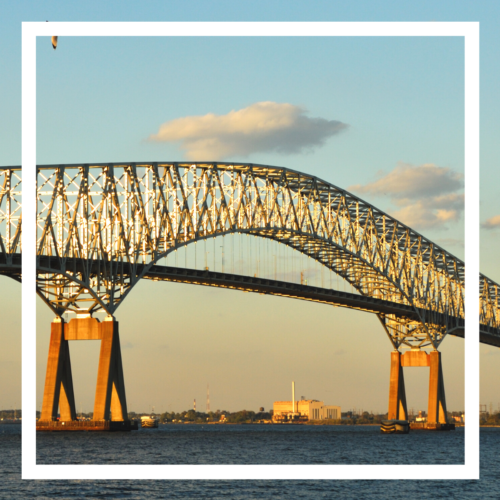
Civil Engineering History and the Baltimore Beltway
More than 44 years ago the Francis Scott Key Bridge was officially completed and became an engineering marvel. This famous bridge was the finishing touch to a nearly 20-year project to build Maryland Interstate 695, also called the Baltimore Beltway. Construction on the Francis Scott Key Bridge began in 1972, was then completed, and opened to traffic on March 23, 1977.
Engineers combined two bridge design elements to create the Francis Scott Key Bridge. This bridge is both a continuous truss bridge as well as an arch bridge. It also has cantilever elements making it truly unique. The total length of the bridge is 8,636 feet with the main span measuring 1,200 feet.
Engineering a Record-Breaking Bridge
When the Francis Scott Key Bridge was constructed, it was the second longest bridge of its type in the world. Today it is the second longest in the United States and the third in the world. The Astoria-Megler Bridge, located in Astoria, Oregon and built in 1966 is longer by only 32 feet!
Why not a tunnel?
The Francis Scott Key Bridge is paralleled by two tunnels: The McHenry Tunnel and the Baltimore Tunnel. Originally planned to be a tunnel, the route was changed to a bridge after initial construction bids were reviewed.
Unlike a tunnel, building a bridge offered extra benefits to the area. It is more cost effective to build and maintain or repair a bridge than a tunnel. Engineers were also able to add more lanes than originally planned which allowed a safer and faster way for more vehicles to travel. A bridge also provided an alternate route for moving hazardous waste, which is prohibited in tunnels.
History Chooses a Name
The Francis Scott Key Bridge passes within several hundred feet of the historic Revolutionary War battle site of Fort McHenry. In September 1814 a lawyer and amateur poet named Francis Scott Key was confined to a boat. During the battle he wrote a poem called “The Defense of Fort McHenry,” which was later renamed “The Star Spangled Banner” and became the national anthem of the United States. Because of this piece of important American history, Francis Scott Key Bridge became the official name.
The bridge is also called:
- The Outer Harbor Crossing
- The Key Bridge
- The Beltway Bridge
Whatever you want to call it, it is an important contribution to the history of civil engineering.
Making History Requires Knowing History
At O’Brien Engineering, we know a thing or two about innovation because we’re students of history. OEI engineers also strive for continuous improvement, which makes us your perfect partner for your next big project. Contact us today to learn more about our history, our three decades of experience, and what makes OEI the firm that bridges the gap between ideas and implementation.
